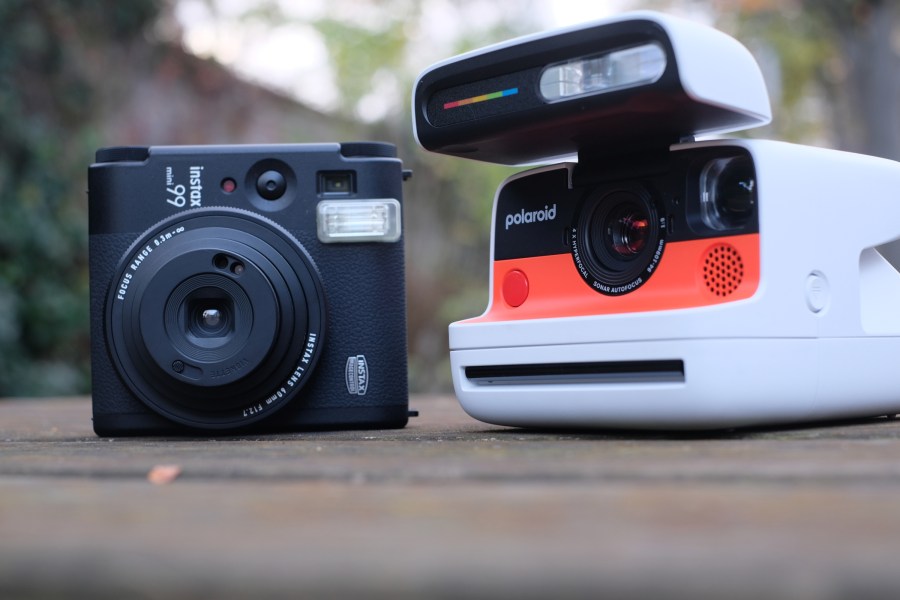I absolutely love instant photography. With instant cameras, I get to throw any pursuit of technical perfection out of the window and just capture moments with spontaneity, and at the end of it, I have a selection of real, tangible physical prints that I can keep or give away as I choose.
While digital instant print cameras are cheap to buy and cheaper to run, for the true alchemical instant experience, you’ve got to go with film. There are currently two big names in town: Instax and Polaroid. If you’re buying an instant film camera in 2025, it’s one of these.
Obviously the two formats are similar in the fundamentals – you snap a photo, a print pops out. Up close, however, Instax and Polaroid are pretty different, offering varying levels of control over your images and producing differently sized prints. And then there’s also the running cost to consider!
I’ve taken two of the latest instant cameras out for a spin: the Polaroid Flip and the Instax mini 99. While they shoot differently sized film, these two cameras are notable in that they both offer a greater degree of manual control over focus and exposure than lots of other instant cameras, many of which are little more than point and shoot. They also cost roughly the same to buy, so it’s reasonable to assume that a prospective instant film enthusiast might be choosing between one or the other.
Which should you choose? Let’s take a closer look.
Instax vs Polaroid: Specifications
| Polaroid Flip | Instax Mini 99 | |
| Film | Polaroid I-Type or 600 | Instax Mini |
| Print size | 107 x 88mm | 54 x 85mm |
| Actual image size | 79 x 77mm | 46 x 62mm |
| Lens | 90-110mm f/8.5-66.6 | 60mm f/12.7 |
| Focus zones | 4 (0.4 to 0.8m, 0.8 to 1.1m, 1.1 to 2.0m, 2.0m to inf.) | 3 (0.3 to 0.6m, 0.6 to 3m, 3m to inf.) |
| Shutter speed | 1/200 to 30sec (selectable), Bulb mode | 1/400 to 1.8sec (auto), Bulb mode (up to 10 sec) |
| Bluetooth | Yes | No |
| Battery | Rechargeable (USB-C) | Rechargeable (USB-C) |
| Exposure compensation | Yes (+/- 2 steps) | Yes (+/- 2 steps) |
| Self-timer | Yes | Yes |
| Double exposure | Yes | Yes |
| Price | $219 / £189 | $234 / £174 |
| Price of film | $18 / £16 for 8 exp. | $17 / £15 for 20 exp. |
Polaroid vs Instax: Build & handling
Polaroid cameras tend to be considerably larger than Instax, which makes sense given that the film itself is bigger. Accordingly, the Flip is a substantially chunkier and heavier prospect than the Mini 99. Both have pleasingly analogue startup routines – there are no power buttons, you just flip up the Polaroid’s flash unit to turn it on, and twist the Mini 99’s lens to do the same.
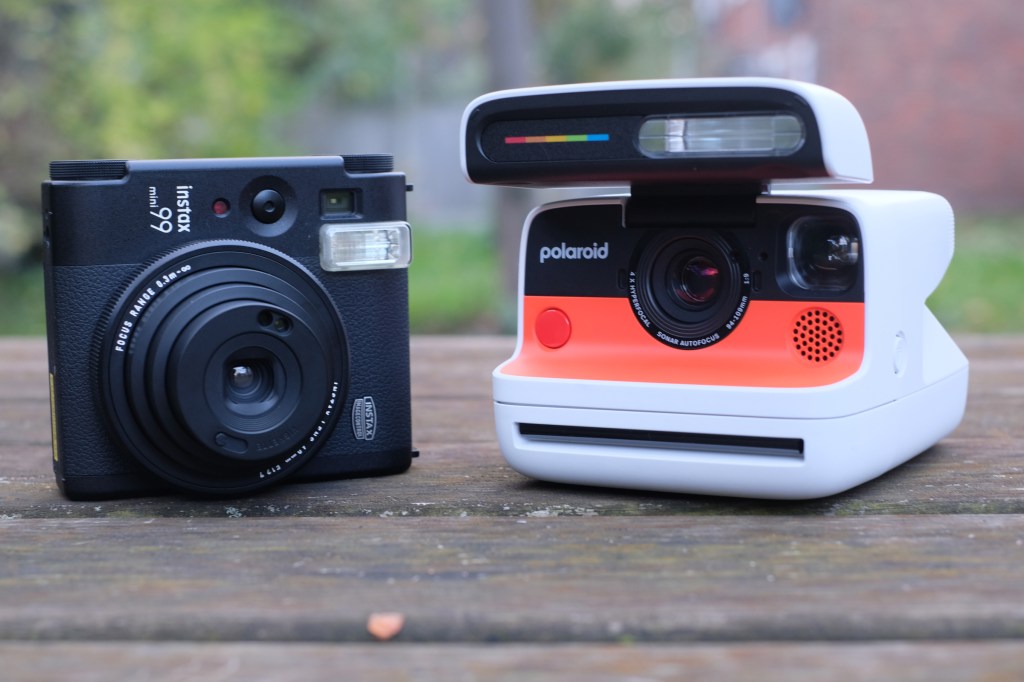
The film-loading process for both cameras is idiot-proof (source: I am an idiot and have never had a problem). Neither are especially ergonomic and both are all plastic, but both have nicely curved edges and in general feel nicely designed for smooth operability. I assumed before opening the boxes that I would prefer the design of the Polaroid Flip – the cameras are just such cool objects. I think on balance I do, but it’s a closer-run thing than I’d expected. The Mini 99 is a nice-looking camera.
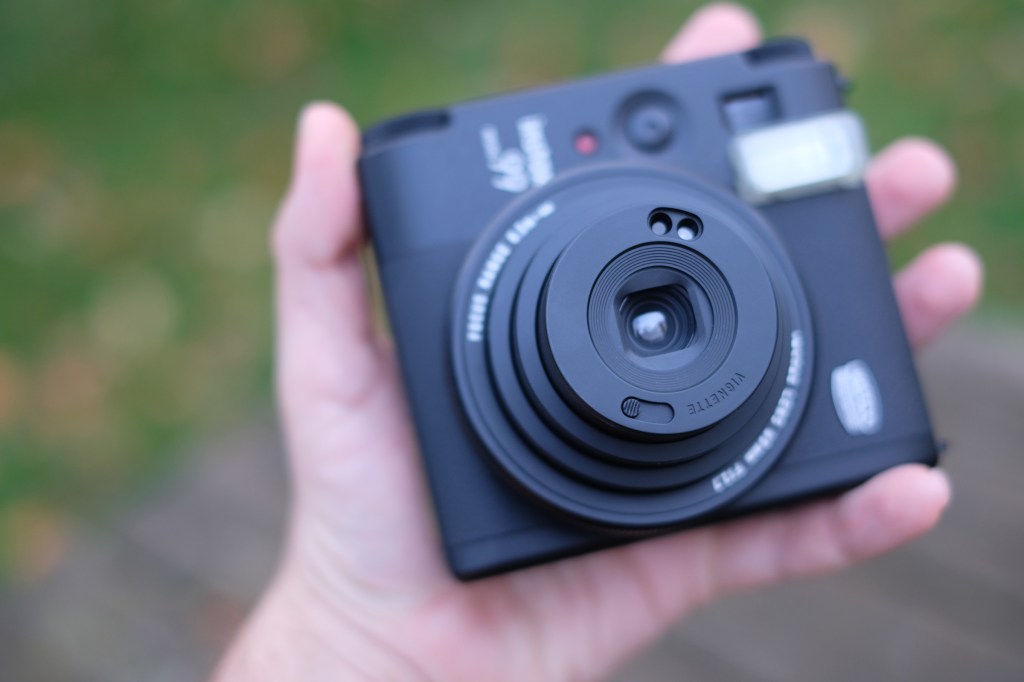
Only one of the cameras has app control. The Polaroid app is a slick piece of work, pairing with the camera within seconds and putting all the controls nicely at your fingertips. You can adjust exposure compensation, trigger the shutter, set a self-timer, select from one of four four zones, or even take complete manual control over exposure settings to get experimental. Your changes will be immediately reflected with symbols on the LCD screen – it’s all lovely and responsive.

If you want to do anything other than point and shoot on the Flip, you’re going to use the app. There are some on-body controls for limited functions, but they’re not intuitive – you can set exposure compensation with some combination of long and short presses of the mode button that I’ve already forgotten even though I looked it up again this morning. Realistically, it’s the app.
The instax mini 99, meanwhile, is an app-less affair (yes, I know there’s the instax UP! app for scanning prints but that’s not what I mean). It sports physical control dials akin to those on Fujifilm’s mirrorless X cameras, albeit much simpler. On the right you’ve got a simple exposure compensation dial that allows you to make images lighter or darker; on the left, a dial that lets you cycle through different colour effects. Focusing-zone selection is done by twisting the lens dial – once you find the focus distance scale on the bottom, it’s easy and intuitive.

I’m torn. As a rule, I always prefer when a device is self-sufficient rather than relying on another device, and the bulbous, non-grippy build of the Polaroid Flip doesn’t exactly lend itself to being used with a phone in the other hand. But the Polaroid app experience is really damn good, putting total creative control at your fingertips, and the Instax doesn’t have an equivalent.
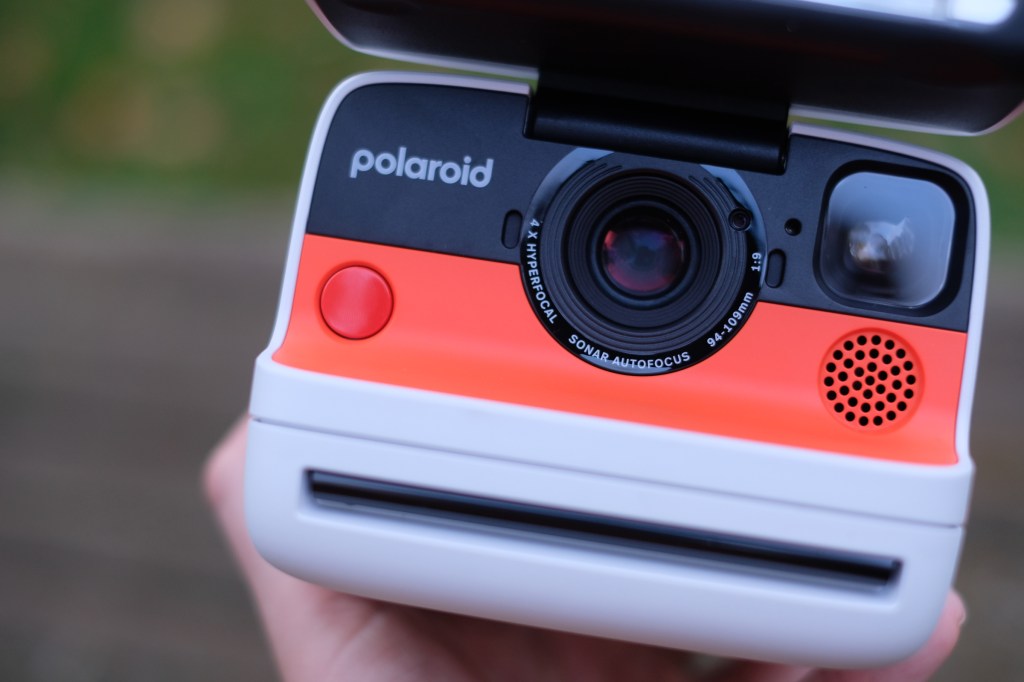
Instax vs Polaroid: Performance
Upon viewing the Polaroid and Instax photos side by side, my partner made an accurate observation that I’m going to steal: your eye always goes to the Instax first, but you’ll likely end up preferring the Polaroid.
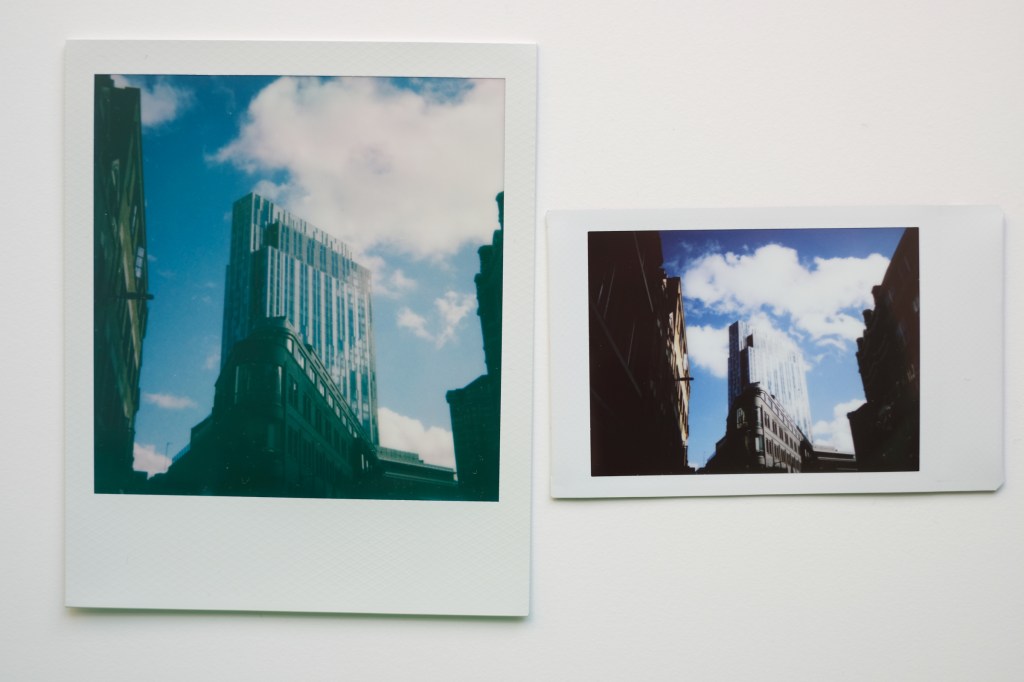
Instax photos deliver punchier and more saturated colours than Polaroids. Their narrower dynamic range means that highlights come out dazzling white, while shadows are impenetrable black. This means that while images aren’t especially true to life or detailed, they tend to have more impact than you’d expect given the print’s small size.
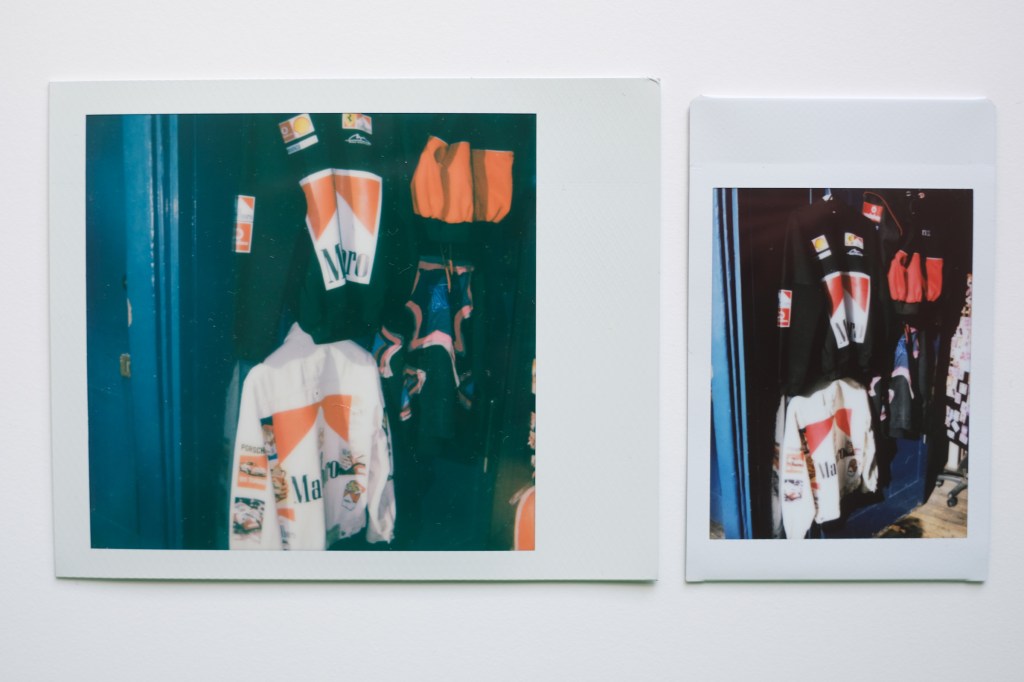
Meanwhile, the muted colour palette of Polaroid is less attention-grabbing, but once you start to inspect the print you appreciate that an impressive amount of detail has been retained in highlights and shadows. Exposures tend to be nicely balanced, and I gave the Polaroid some tricky contrast-y light situations, which it handled well. I love the timeless vintage glow of the images – once I’ve sat with the Instaxes a while, I find some of them a little harsh and glaring.
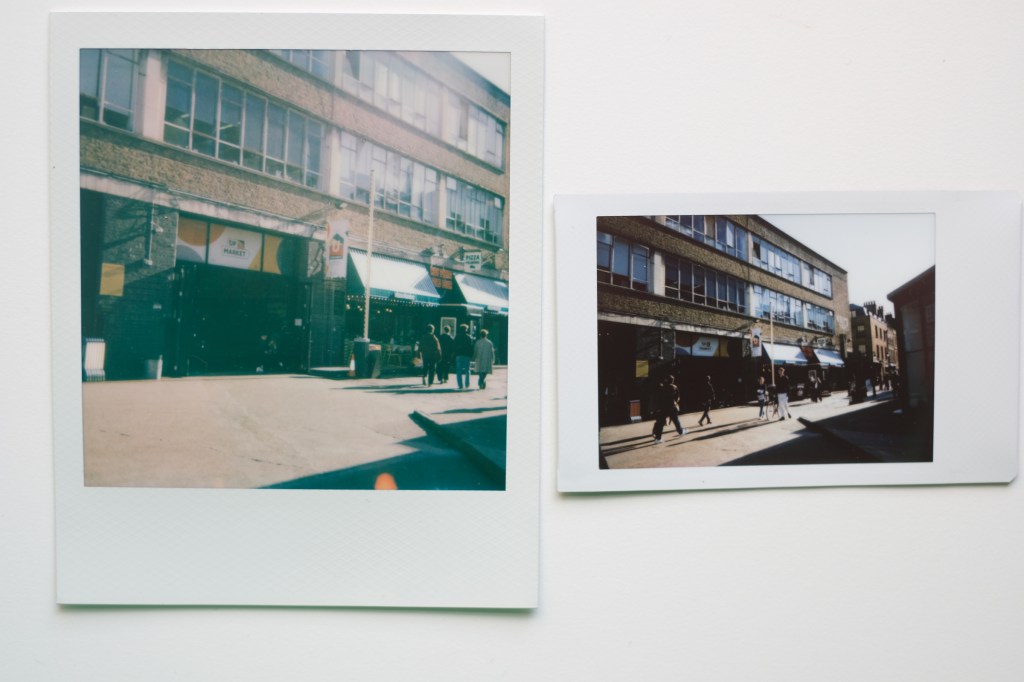
A potential downside of the Polaroid’s greater depth of control and superior image quality is that you run a greater risk of error. Take a look at these images I snapped of my egg and cheese bagel. In both cases, I didn’t particularly think about my settings; I just did what any food Instagrammer is realistically going to do, and pointed and shot.
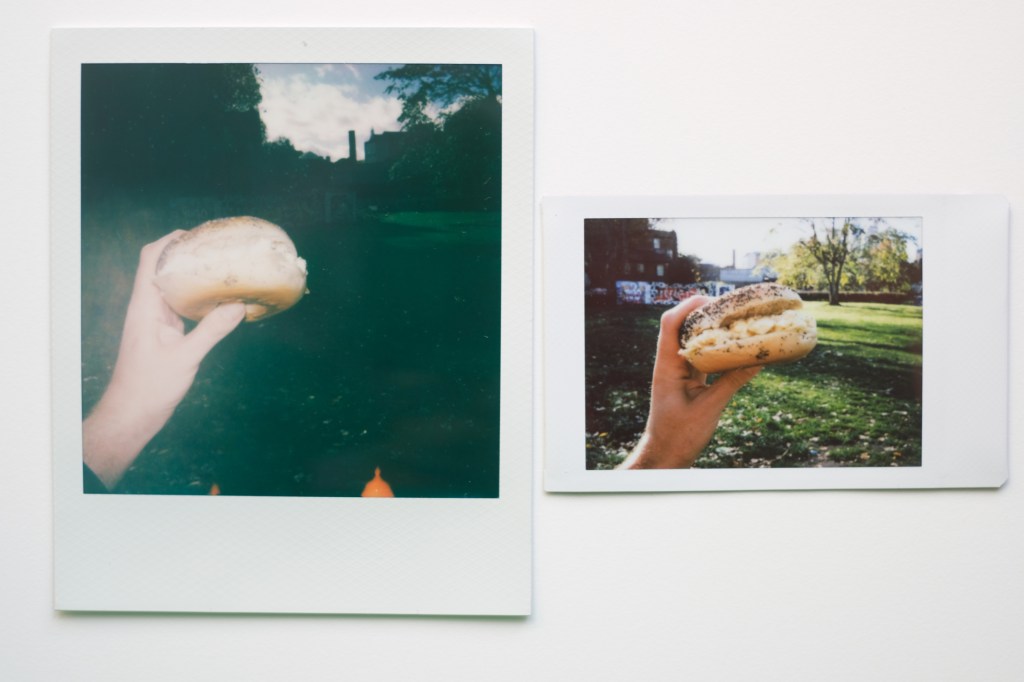
The Instax, with no input from me, produced a lovely little photo that the bagel shop would probably be happy to stick in their window. The Polaroid, with me forgetting to turn the flash off and being forced to hold the subject at maximum arm length to stop the ‘too-close’ red light from flashing, produced something that looks like it was cut out of a serial killer’s scrapbook.

Still, if I had troubled to nail my settings, the Polaroid would have done better, as it did in the selfies above, producing a much softer, more pleasant and frankly more flattering image.
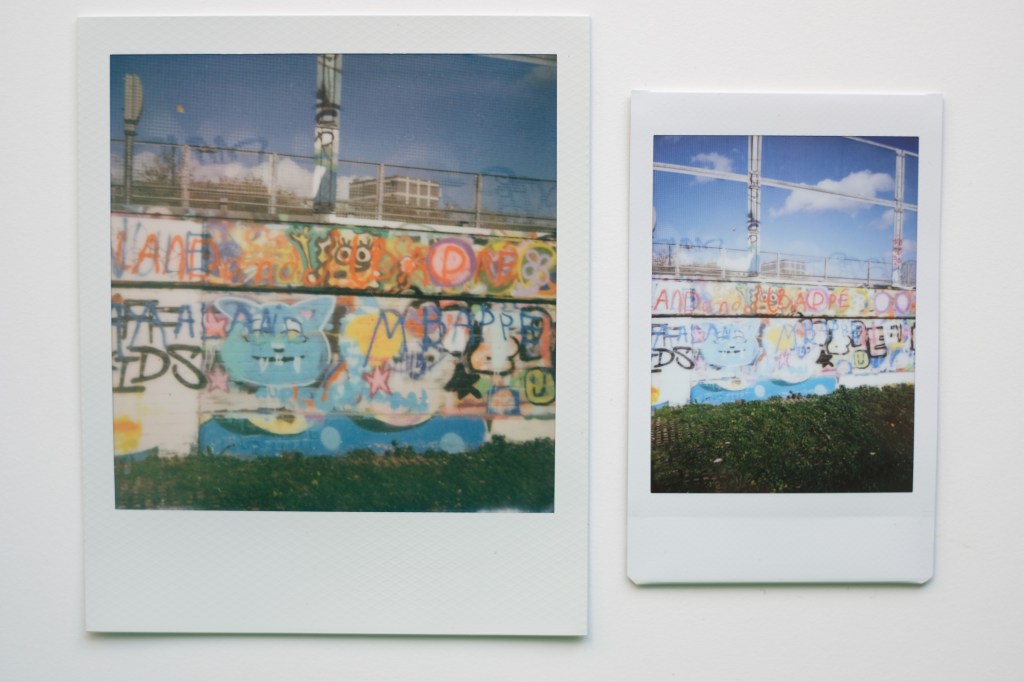
Control-wise, Instax Mini 99 is undoubtedly a more basic affair, though it does offer some shooting variety. My colleague Isabella managed to get some pretty credible action shots on it in her review by using the ‘Sports’ mode, and the colour filter dial is fun to play with, even if most of the effects aren’t personally to my taste.
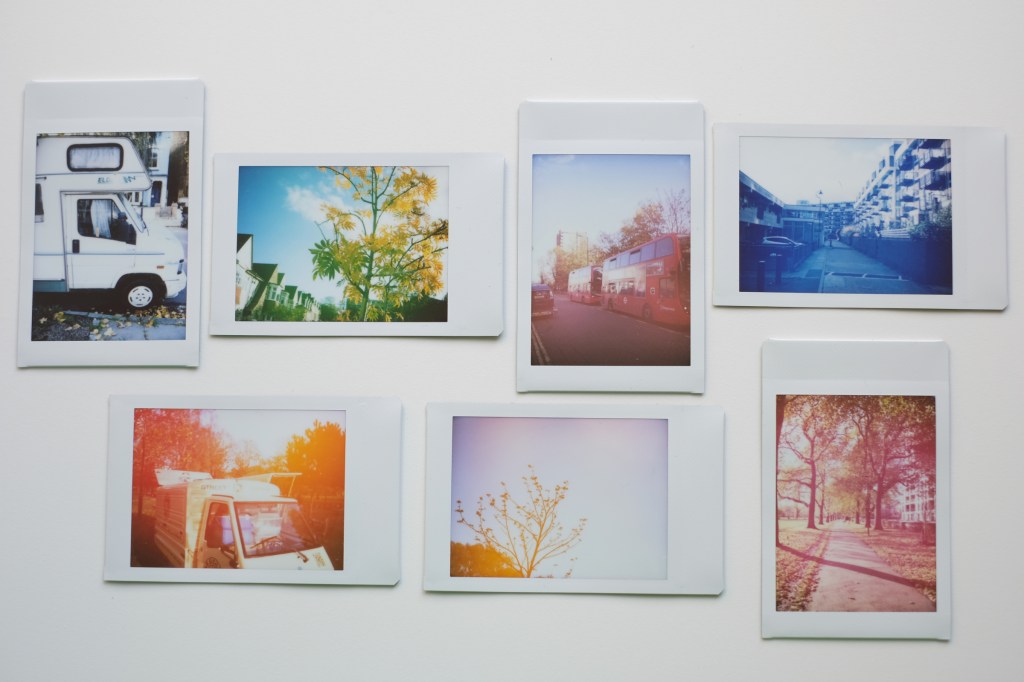
Instax vs Polaroid: Value for money
As far as starting costs go, these two cameras are about on a level field. The Fujifilm Instax Mini 99 currently goes for around $234 / £174, while the Polaroid Flip sits at $219 / £189. These prices can and do fluctuate a little, but fundamentally, there’s not really a meaningful difference in terms of the cost of the cameras themselves.
Where the meaningful difference comes is in the film. There is no getting around this – running a Polaroid is an expensive business, and that’s never not going to be on your mind as you shoot with it. For about $17 / £15, you can get a pack of 20 Instax mini exposures. Spending an equivalent amount (around $18 / £16) on Polaroid film will get you just eight.
Yes, Polaroid pictures are better. But they will cost you $2.25 / £2 per shot, compared to ¢85 / 75p per shot on the Instax. That’s quite a difference.
Polaroid vs Instax: Verdict
With its user-selectable shutter speeds, its autofocus and its larger image canvas, the Polaroid Flip is unquestionably the tool I would recommend to someone embarking on a serious art project. Its softer and more muted images absolutely nail that retro feel, and the prints themselves are impressively detailed when viewed up close. Its broad suite of controls enables long-exposure photography and other creative applications.
However, if someone asked me for a recommendation of an easy-to-use instant film camera for non-tax-deductible fun, it’d certainly be the Instax Mini 99. Its cheaper film, smaller dimensions, easier operability and more immediately striking images make it ideal Instagram fodder.
In short…
If you care about photography, image quality and versatility… get a Polaroid.
If you care about fun, convenience and cost… get an Instax.

